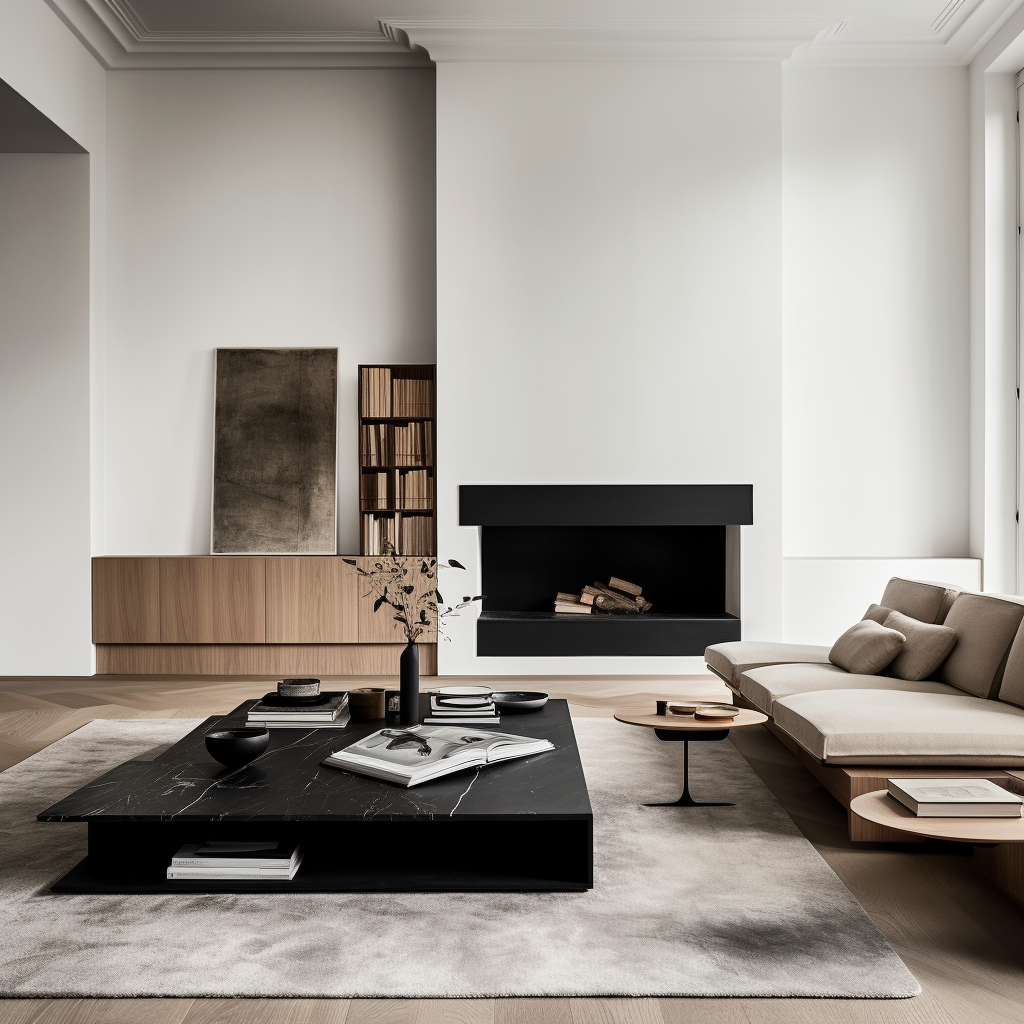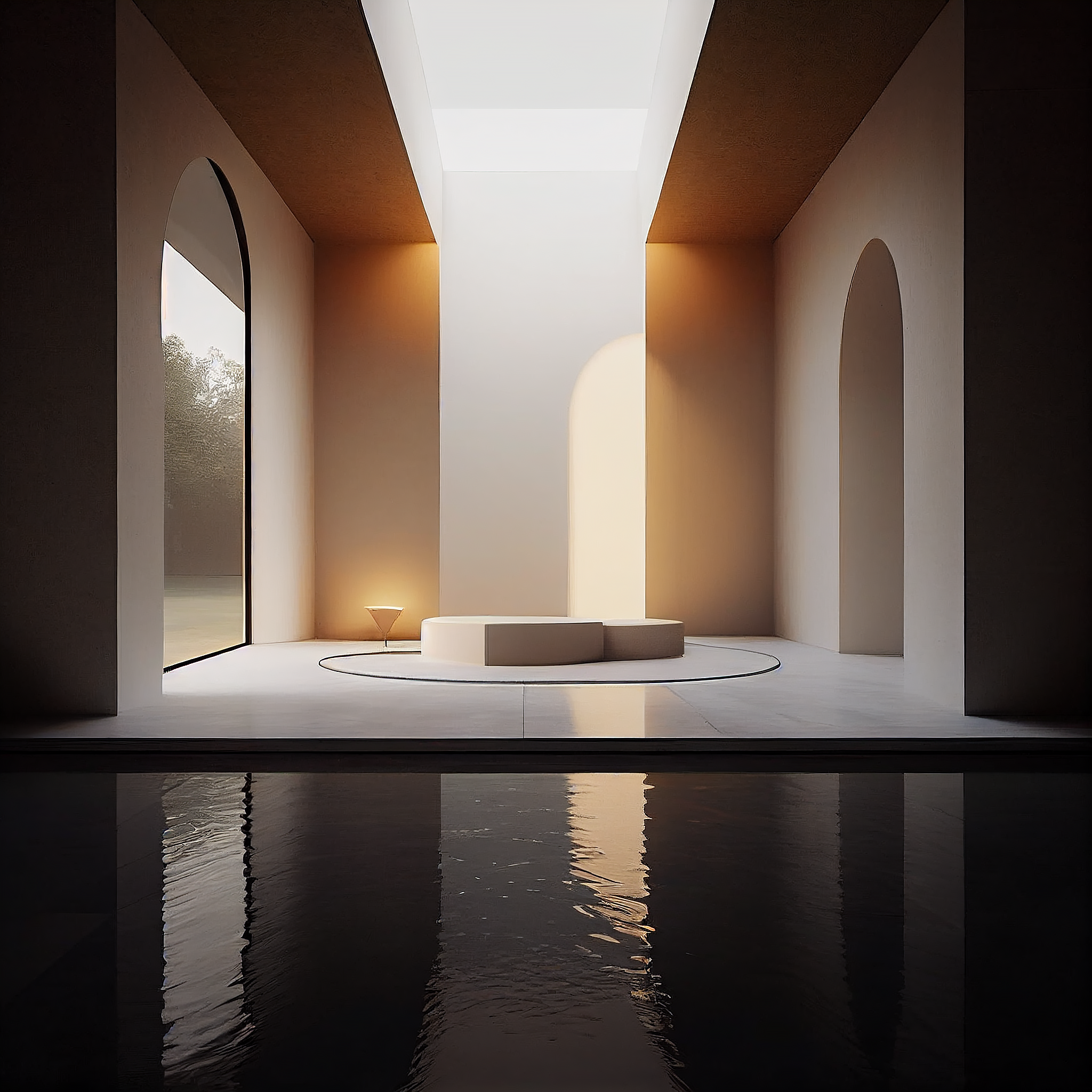In the fast-paced world we live in, simplicity and elegance have become highly sought-after qualities. When it comes to interior design, the clean and minimalist approach has gained immense popularity, offering a refreshing escape from cluttered spaces. The year 2023 brings with it new trends and innovations that further enhance the appeal of clean and minimalist interior designs. In this article, we will explore the captivating allure of clean and minimalist interior designs, their growing appeal, and how you can embrace simplicity and elegance in your own living spaces.
Clean and Minimalist Interior Designs Appeal for the Year of 2023
Clean and minimalist interior designs continue to captivate homeowners and designers alike with their timeless appeal. The year 2023 is no exception, as this design style gains even more popularity. Let's delve into the reasons behind its enduring charm and the elements that define its appeal.









1. Simplicity that Soothes
Clean and minimalist interior designs appeal to our innate desire for tranquility and peace. The simplicity of these designs creates a serene and harmonious atmosphere that promotes relaxation and well-being. By eliminating unnecessary clutter and excessive ornamentation, clean and minimalist spaces allow us to focus on what truly matters, creating a sanctuary within our homes.
2. Elegance in its Essence
Embracing simplicity doesn't mean compromising on elegance. In fact, clean and minimalist interior designs exude a refined elegance that speaks volumes. With their carefully selected furnishings, sleek lines, and curated color palettes, these designs effortlessly create an atmosphere of sophistication and grace.
3. Enhanced Functionality
One of the key appeals of clean and minimalist interior designs is their emphasis on functionality. By decluttering our living spaces and opting for sleek, multifunctional furniture, we can maximize the usability of our homes. The year 2023 brings innovative solutions that further enhance the functionality of clean and minimalist designs, making them even more practical and efficient.
4. Timeless Aesthetics
Clean and minimalist interior designs possess a timeless quality that transcends passing trends. Their enduring aesthetics ensure that your living spaces remain stylish and relevant for years to come. By adopting a clean and minimalist approach, you can create a space that stands the test of time, saving you from the need for frequent renovations or redesigns.
5. Versatility in Expression
Clean and minimalist interior designs offer a versatile canvas for personal expression. The simplicity of these designs allows you to infuse your own personality and style into your living spaces. Whether you prefer a monochromatic color scheme or a pop of vibrant accents, clean and minimalist designs provide the perfect backdrop for showcasing your individuality.
FAQs about Clean and Minimalist Interior Designs
FAQ 1: What are some key elements of clean and minimalist interior designs?
Clean and minimalist interior designs typically feature open floor plans, neutral color palettes, uncluttered spaces, and simple yet high-quality furniture and accessories. These elements work together to create a sense of spaciousness and tranquility.
FAQ 2: How can I add warmth to a clean and minimalist interior design?
While clean and minimalist designs often prioritize simplicity, it's still possible to infuse warmth into these spaces. Opt for natural materials such as wood or incorporate cozy textiles like plush rugs or soft throw blankets. Additionally, adding warm lighting fixtures and incorporating plants can create a welcoming ambiance.
The Power of Decluttering
A fundamental aspect of clean and minimalist interior design is decluttering. By removing unnecessary items and keeping only the essentials, you can create a sense of spaciousness and serenity within your living spaces. Minimalism encourages us to embrace the philosophy of "less is more," allowing each carefully selected piece to shine and make a statement.
Neutral Color Palettes and Natural Materials
To achieve a clean and minimalist look, opt for neutral color palettes that evoke a sense of calmness and sophistication. Shades of white, beige, gray, and muted earth tones work harmoniously together, creating a visually soothing environment. Incorporating natural materials such as wood, stone, and linen adds warmth and texture, enhancing the overall aesthetic appeal.
Streamlined Furniture and Functional Layouts
When selecting furniture for your clean and minimalist interior, prioritize pieces with sleek lines and simple forms. Avoid excessive ornamentation or intricate details that can clutter the visual space. Opt for multifunctional furniture that serves both practical and aesthetic purposes. Functional layouts that maximize open spaces and allow for seamless movement are key to achieving a clean and minimalist ambiance.
Ample Natural Light and Strategic Lighting Design
Natural light plays a crucial role in clean and minimalist interior design. It not only illuminates the space but also enhances the overall atmosphere. Maximize natural light by opting for sheer window treatments or minimal blinds that allow sunlight to filter through. Additionally, consider incorporating strategic lighting design with recessed fixtures and minimalist pendant lights to create a layered and inviting environment, especially during the evening hours.
Thoughtful Accessorizing and Artful Display
Clean and minimalist interior design doesn't mean completely devoid of accessories or personal touches. It's about curating and displaying items thoughtfully. Select a few statement pieces or artworks that resonate with your style and place them strategically within the space. Remember, the goal is to create a focal point without overwhelming the overall aesthetic.
Harmonious Balance Between Functionality and Aesthetics
In clean and minimalist interior designs, striking the right balance between functionality and aesthetics is paramount. While minimalism embraces simplicity, it doesn't compromise on practicality. Ensure that your space remains functional and serves its intended purpose without sacrificing the clean and uncluttered aesthetic you desire. Integrate storage solutions that blend seamlessly with the overall design, keeping belongings neatly organized and out of sight.
Sustainability and Ethical Choices
As we move towards a more conscious way of living, sustainability and ethical choices have become significant considerations in interior design. Embrace eco-friendly materials, invest in quality pieces that stand the test of time, and support local artisans and businesses. By making responsible choices, you not only contribute to the betterment of the environment but also add depth and character to your clean and minimalist spaces.
The Timeless Allure of Clean and Minimalist Interior Design
Clean and minimalist interior designs have a timeless allure that transcends passing trends. By embracing simplicity, decluttering, and prioritizing quality and functionality, you can create spaces that are not only visually stunning but also promote a sense of calm and well-being.
FAQ 3: Can clean and minimalist designs work in small spaces?
Absolutely! In fact, clean and minimalist designs are ideal for small spaces, as they help create an illusion of openness and airiness. By maximizing storage solutions, using multifunctional furniture, and maintaining a clutter-free environment, you can make the most of limited square footage while still enjoying the benefits of clean and minimalist design.
FAQ 4: Are clean and minimalist designs suitable for all types of homes?
Clean, minimalist designs are versatile and can be adapted to suit various types of homes. Whether you live in a contemporary apartment, a cozy cottage, or a spacious suburban house, the principles of clean and minimalist design can be applied to create a harmonious and visually pleasing interior.
FAQ 5: How can I incorporate pops of color into a clean and minimalist design?
While clean and minimalist designs often feature a neutral color palette, incorporating pops of color can add visual interest and personality to the space. Choose one or two accent colors and use them sparingly in accessories, artwork, or even a statement furniture piece. This allows the colors to stand out while still maintaining the overall clean and minimalist aesthetic.
FAQ 6: What are some tips for maintaining a clean and minimalist space?
To maintain a clean and minimalist space, it's important to embrace a clutter-free lifestyle. Regularly declutter your belongings, invest in smart storage solutions, and adopt a minimalist mindset when it comes to purchasing new items. Additionally, establish cleaning routines to keep your space tidy and organized.
Designed by Marie Antonette Designs
As we embrace the year 2023, the appeal of clean and minimalist interior designs continues to grow. The simplicity and elegance of these designs offer a refreshing escape from the chaos of our modern lives. By creating a serene and harmonious atmosphere, enhancing functionality, and embracing timeless aesthetics, clean and minimalist designs allow us to create living spaces that are both visually captivating and practical.
So, whether you're looking to transform your home or simply add a touch of minimalism to your existing decor, consider the clean and minimalist interior designs that appeal for the year 2023. Embrace simplicity and elegance, and discover the transformative power of a clutter-free and visually stunning living space.
Get Access to our Design Blogs: http://www.marieantonettedesigns.com/design-blog












































